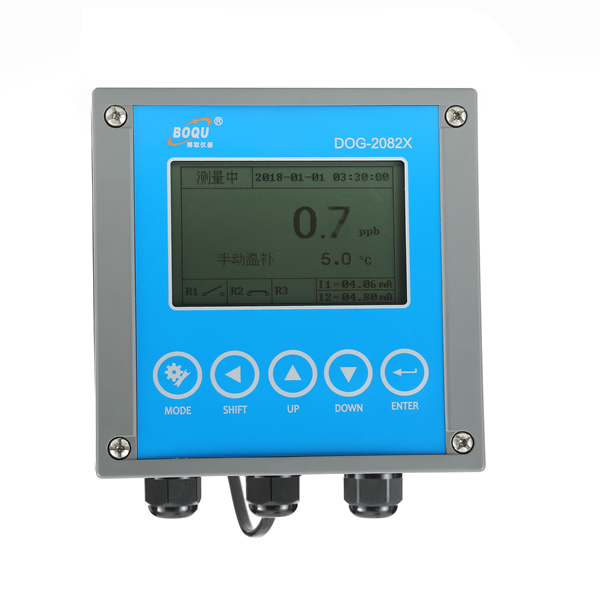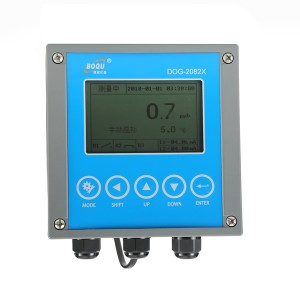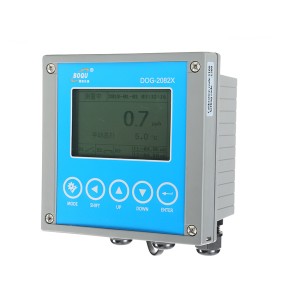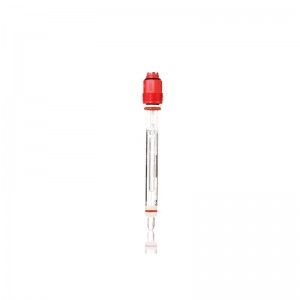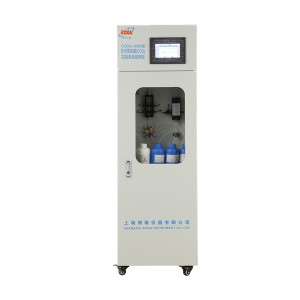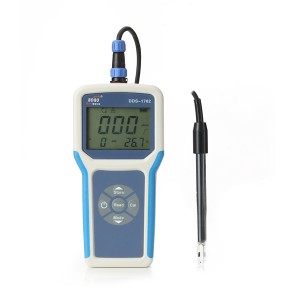Instruments are used in effluent treatment, pure water, boiler water, surface water, electroplate, electron, chemical industry, pharmacy, food production process, environmental monitoring, brewery, fermentation etc.
|
Measuring range |
0.0 to 200.0 |
0.00 to 20.00ppm, 0.0 to 200.0 ppb |
|
Resolution |
0.1 |
0.01 / 0.1 |
|
Accuracy |
±0.2 |
±0.02 |
|
Temp. compensation |
Pt 1000/NTC22K |
|
|
Temp. range |
-10.0 to +130.0℃ |
|
|
Temp. compensation range |
-10.0 to +130.0℃ |
|
|
Temp. resolution |
0.1℃ |
|
|
Temp. accuracy |
±0.2℃ |
|
|
Current range of electrode |
-2.0 to +400 nA |
|
|
Accuracy of electrode current |
±0.005nA |
|
|
Polarization |
-0.675V |
|
|
Pressure range |
500 to 9999 mBar |
|
|
Salinity range |
0.00 to 50.00 ppt |
|
|
Ambient temperature range |
0 to +70℃ |
|
|
Storage temp. |
-20 to +70℃ |
|
|
Display |
Back light, dot matrix |
|
|
DO current output1 |
Isolated, 4 to 20mA output , max. load 500Ω |
|
|
Temp. current output 2 |
Isolated, 4 to 20mA output , max. load 500Ω |
|
|
Current output accuracy |
±0.05 mA |
|
|
RS485 |
Mod bus RTU protocol |
|
|
Baud rate |
9600/19200/38400 |
|
|
Maximum relay contacts capacity |
5A/250VAC,5A/30VDC |
|
|
Cleaning setting |
ON: 1 to 1000 seconds, OFF: 0.1 to 1000.0 hours |
|
|
One multi function relay |
clean/period alarm/error alarm |
|
|
Relay delay |
0-120 seconds |
|
|
Data logging capacity |
500,000 |
|
|
Language selection |
English/traditional Chinese/simplified Chinese |
|
|
Waterproof grade |
IP65 |
|
|
Power supply |
From 90 to 260 VAC, power consumption < 5 watts |
|
|
Installation |
panel/wall/pipe installation |
|
|
Weight |
0.85Kg |
|
Dissolved oxygen is a measure of the amount of gaseous oxygen contained in water. Healthy waters that can support life must contain dissolved oxygen (DO).
Dissolved Oxygen enters water by:
direct absorption from the atmosphere.
rapid movement from winds, waves, currents or mechanical aeration.
aquatic plant life photosynthesis as a by-product of the process.
Measuring dissolved oxygen in water and treatment to maintain proper DO levels, are crucial functions in a variety of water treatment applications. While dissolved oxygen is necessary to support life and treatment processes, it can also be detrimental, causing oxidation that damages equipment and compromises product. Dissolved oxygen affects:
Quality: The DO concentration determines the quality of source water. Without enough DO, water turns foul and unhealthy affecting the quality of the environment, drinking water and other products.
Regulatory Compliance: To comply with regulations, waste water often needs to have certain concentrations of DO before it can be discharged into a stream, lake, river or waterway. Healthy waters that can support life must contain dissolved oxygen.
Process Control: DO levels are critical to control biological treatment of waste water, as well as the biofiltration phase of drinking water production. In some industrial applications (e.g. power production) any DO is detrimental for steam generation and must be removed and its concentrations must be tightly controlled.

